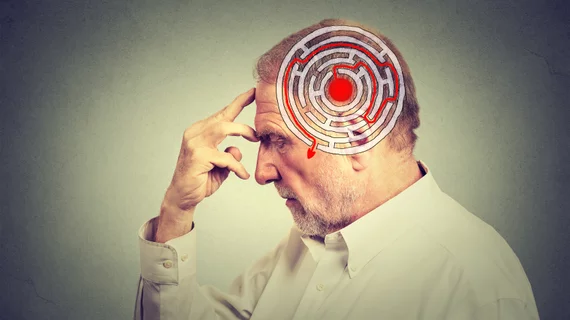The silver tsunami of aging Americans will bring a corresponding wave of dementia diagnoses, one that radiology business leaders will need to be prepared for in the coming years.
Experts note that by 2050, the number of individuals age 65 and older will swell to 88 million. With age a key driver of such brain diseases, Alzheimer’s cases will more than double from 5.7 million up to 13.8 million. This presents an opportunity and challenge for radiologists, who will play a pivotal role in identification and treatment, two Indiana University School of Medicine experts wrote recently in the American Journal of Roentgenology.
“As radiology personnel encounter dementia with increasing frequency, knowledge of this disorder will become ever more important for high-quality patient care,” professor Richard Gunderman, MD, PhD, and med student Lily Wolf noted in the piece, published Nov. 4. “As leaders in their departments, radiologists have a responsibility to make sure that their colleagues possess a sound understanding of the epidemiology and common forms of dementia, the special challenges and opportunities dementias present in the care of patients and families, and the ways in which the patient experience in radiology can be made safer and more hospitable.”
They offer a quick rundown of the disease’s different forms and symptoms, which include the more prevalent Alzheimer’s and vascular dementia, along with rarer types such as fronto-temporal or with Lewy bodies.
While there is not yet a sure-fire means to treat dementia, Wolf and Gunderman offer some simple steps that radiologist practices can take to improve both patient treatment and caregivers’ work life.
1) Be mindful of communication challenges by eliminating any distractions, speaking in a slow and calm manner, using gestures liberally, speaking in short sentences and allowing extra time for responses. Patience is of the essence, with most trying to make a good-faith effort to understand what’s happening.
2) Ease discomfort for individuals, who likely see a visit to the radiology department as complicated and even threatening. Caregivers can do so by explaining what they’re doing before touching patients, apologizing for causing any anxiety and respecting privacy. It’s also important to watch out for signs of underlying medical conditions, such as a UTI or bone fractures.
3) Keep safety on the mind by walking through the practice to look for and correct possible fall hazards, such as floor mats or inadequate lighting. Also, do not dispense any assistive devices (i.e., walkers or wheelchairs) that individuals need to navigate their appointment.
4) Understand end-of-life care wishes by determining if patients have decision-making capacity, advanced directives or a desire to withhold particular procedures and tests. If those with end-stage dementia refuse any necessities such as a feeding tube, discuss the matter with a referring physician before their family.
5) Respect the role of family caregivers who are deployed to help make medical decisions and arrange appointments, with many patients unable to undertake activities of daily living. Radiologists must understand their roles and factor them in when discussing care. They also should stay attuned to signs of caregiver distress like exhaustion and depression.
“To a surprising degree, radiology personnel can care for the caregivers simply by extending a welcoming hand of compassion and hospitality,” the authors noted.
6) Extend the same mindfulness to practitioners who may be caring for a loved one with dementia. Oftentimes, radiology personnel must travel long distances to look after loved ones, or spend many sleepless hours at their bedsides. Leaders can help them by staying aware, compassionate, and available to assist with a homemade meal or willingness to take on an extra shift.
“Although the primary professional responsibility is to provide good care to patients and their families, reaching out to and supporting coworkers is another opportunity to foster collegiality and compassion,” Wolf and Gunderman wrote.

